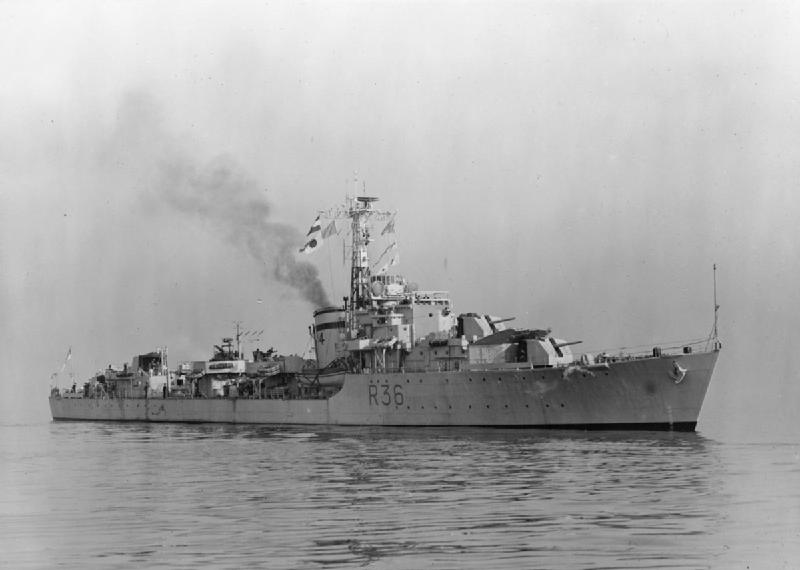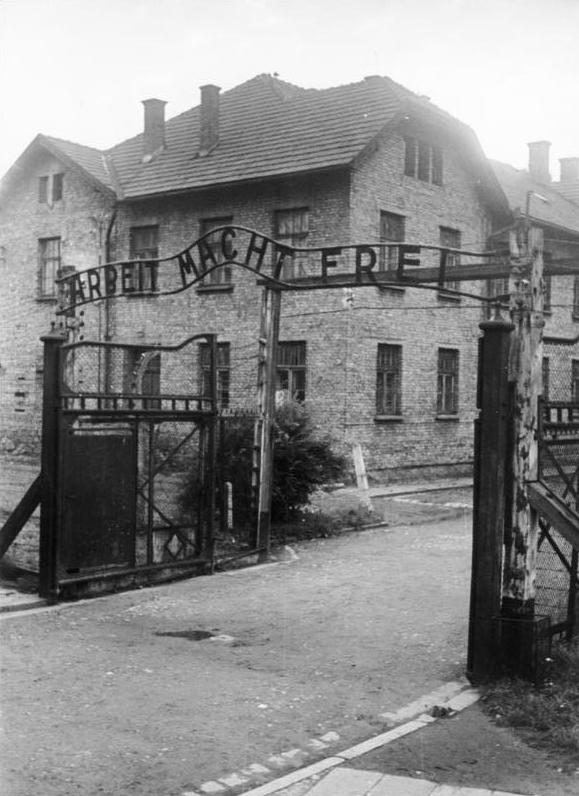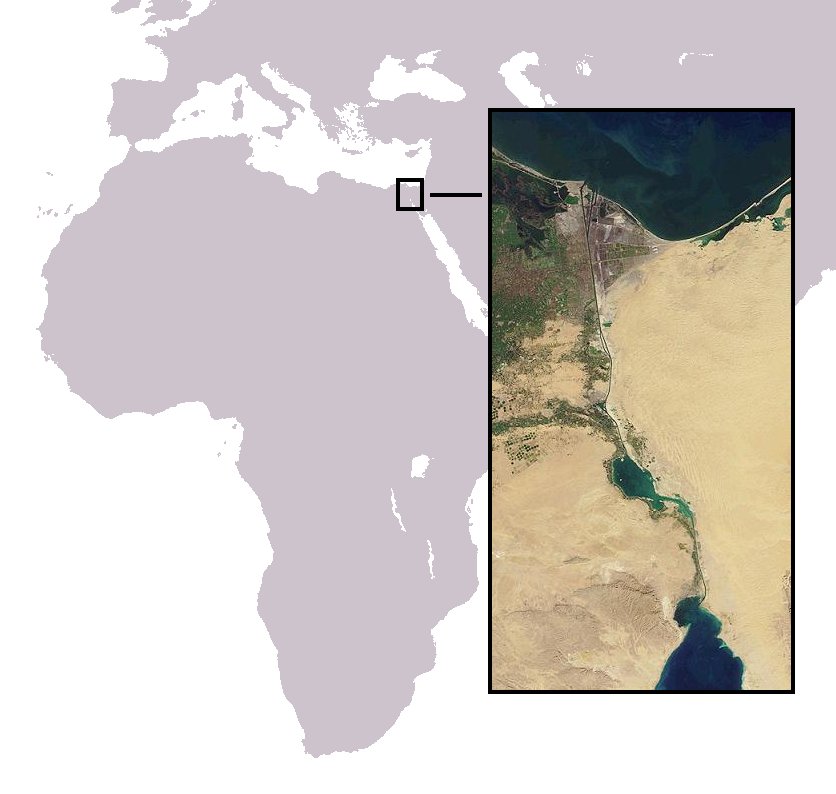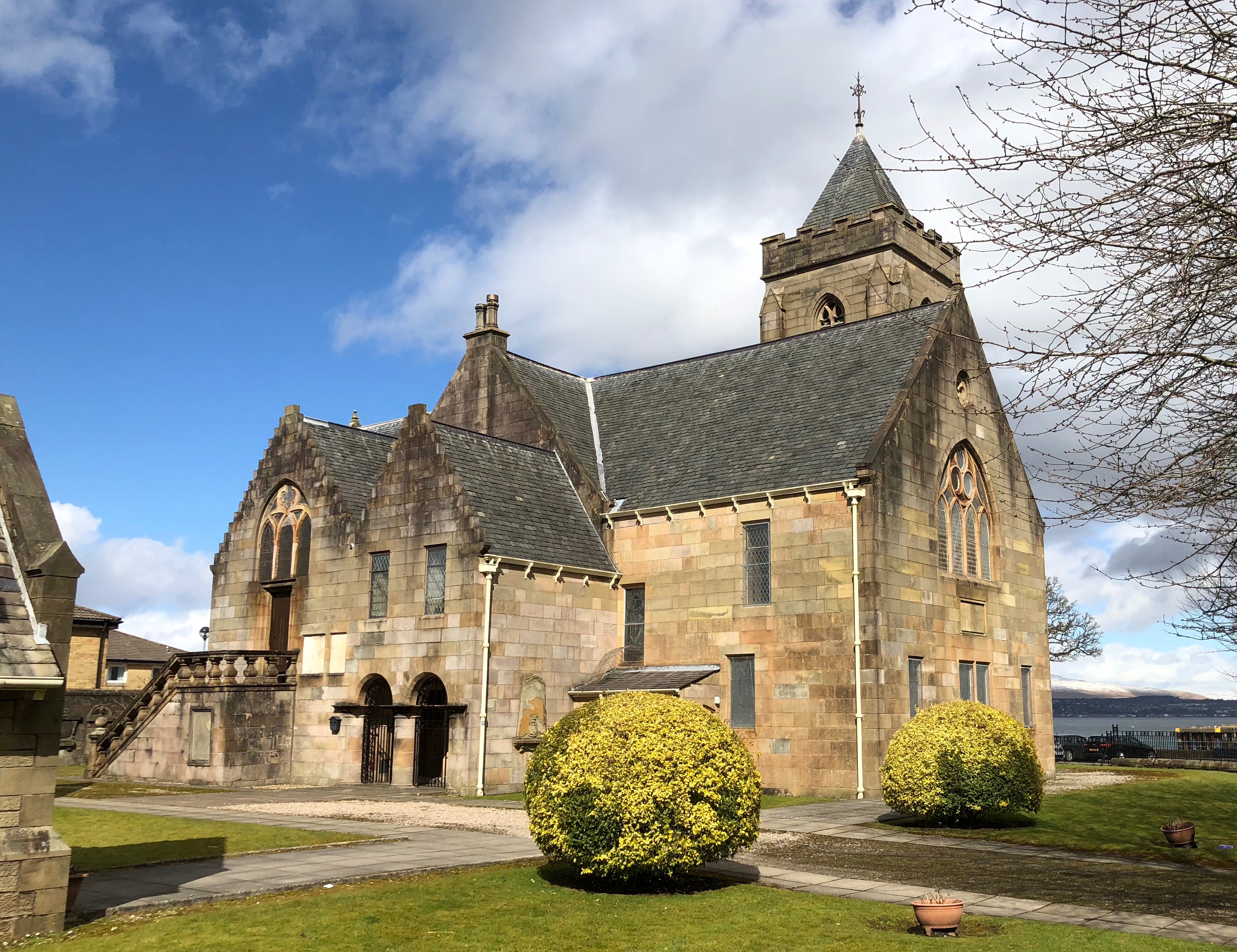|
HMS Chieftain (R36)
HMS ''Chieftain'' was a destroyer of the Royal Navy that was in service from March 1946, and which was scrapped in 1961. Construction The Royal Navy ordered ''Chieftain'' on 24 July 1942, one of eight Ch subclass of the C-class "Intermediate" destroyers of the 1942 Programme. She was laid down at Scotts Shipbuilding and Engineering Company, Greenock, Scotland, on 27 June 1943, and launched 26 February 1945. She was commissioned on 7 March 1946, too late for World War II duty. Service ''Chieftain'' was assigned to the 1st Destroyer Squadron based at Malta and served with the Royal Navy's 1945-8 Palestine Patrol, intercepting illegal immigration into Mandate Palestine. In 1947 Chieftain intercepted three immigrant ships: a schooner, a former USCG cutter, and a former USN vessel. The ex-cutter Unalga renamed ''Chaim Arlosoroff'' got past the RN destroyer and managed to beach near Haifa: the other two were detained at sea. She was given an interim modernization in 1954, which s ... [...More Info...] [...Related Items...] OR: [Wikipedia] [Google] [Baidu] |
1st Destroyer Squadron (United Kingdom)
The 1st Destroyer Squadron was an administrative unit of the Royal Navy from 1951 to 1970. Operational history Originally established as the 1st Destroyer Flotilla in 1947 it was renamed in 1st Destroyer Squadron in October 1951. During its existence, the squadron included C-class and Battle-class destroyers and Leander-class frigates. Ships from the squadron saw service in the Mediterranean Fleet, the Far East Fleet, in the Beira Patrol and as part of the Standing Naval Force Atlantic ( STANAVFORLANT). Of note: Command structure organizational changes took place within Royal Navy post war period the term Flotilla was previously applied to a tactical unit until 1951 which led to the creation of three specific Flag Officers, Flotillas responsible for the Eastern, Home and Mediterranean fleets the existing destroyer flotillas were re-organized now as administrative squadrons. Squadron commander Royal Navy Senior Appointments, Colin Mackie References See also * List of sq ... [...More Info...] [...Related Items...] OR: [Wikipedia] [Google] [Baidu] |
C-class Destroyers (1943) Of The Royal Navy
C class may refer to: Ships * C-class destroyer (other), multiple destroyers * C-class submarine (other), multiple submarines * C-class corvette (other), ships of the Victorian Royal Navy * C-class cruiser, Royal Navy light cruisers built just before the First World War * C-class ferry, Canadian ships * C-class lifeboat, British lifeboats * International C-class catamaran, sailing catamaran Rail vehicles Australia * C-class Melbourne tram * Sydney C-Class Tram * Commonwealth Railways C class, 4-6-0 passenger locomotives * MRWA C class, 4-6-2 steam locomotives * Victorian Railways C class, 2-8-0 steam locomotives * Victorian Railways C class (diesel), diesel locomotives * WAGR C class, axle load steam locomotives * WAGR C class (1880), steam locomotives * WAGR C class (diesel), diesel locomotives Ireland * CIE 201 Class, locomotives New Zealand * NZR C class (1873), tank locomotives * NZR C class (1930), steam locomotives United Kingdom * LB&S ... [...More Info...] [...Related Items...] OR: [Wikipedia] [Google] [Baidu] |
Ships Built On The River Clyde
A ship is a large watercraft that travels the world's oceans and other sufficiently deep waterways, carrying cargo or passengers, or in support of specialized missions, such as defense, research, and fishing. Ships are generally distinguished from boats, based on size, shape, load capacity, and purpose. Ships have supported exploration, trade, warfare, migration, colonization, and science. After the 15th century, new crops that had come from and to the Americas via the European seafarers significantly contributed to world population growth. Ship transport is responsible for the largest portion of world commerce. The word ''ship'' has meant, depending on the era and the context, either just a large vessel or specifically a ship-rigged sailing ship with three or more masts, each of which is square-rigged. As of 2016, there were more than 49,000 merchant ships, totaling almost 1.8 billion dead weight tons. Of these 28% were oil tankers, 43% were bulk carriers, and 13% were cont ... [...More Info...] [...Related Items...] OR: [Wikipedia] [Google] [Baidu] |
1945 Ships
1945 marked the end of World War II and the fall of Nazi Germany and the Empire of Japan. It is also the only year in which nuclear weapons have been used in combat. Events Below, the events of World War II have the "WWII" prefix. January * January 1 – WWII: ** Germany begins Operation Bodenplatte, an attempt by the ''Luftwaffe'' to cripple Allied air forces in the Low Countries. ** Chenogne massacre: German prisoners are allegedly killed by American forces near the village of Chenogne, Belgium. * January 6 – WWII: A German offensive recaptures Esztergom, Hungary from the Russians. * January 12 – WWII: The Soviet Union begins the Vistula–Oder Offensive in Eastern Europe, against the German Army. * January 13 – WWII: The Soviet Union begins the East Prussian Offensive, to eliminate German forces in East Prussia. * January 16 – WWII: Adolf Hitler takes residence in the ''Führerbunker'' in Berlin. * January 17 ** WWII: The Soviet Union occupies Warsaw, P ... [...More Info...] [...Related Items...] OR: [Wikipedia] [Google] [Baidu] |
Suez Crisis
The Suez Crisis, or the Second Arab–Israeli war, also called the Tripartite Aggression ( ar, العدوان الثلاثي, Al-ʿUdwān aṯ-Ṯulāṯiyy) in the Arab world and the Sinai War in Israel,Also known as the Suez War or 1956 War; other names include the ''Sinai war'', ''Suez–Sinai war'', ''1956 Arab–Israeli war'', the Second Arab–Israeli war, ''Suez Campaign'', ''Sinai Campaign'', ''Kadesh Operation'' and ''Operation Musketeer'' was an invasion of Egypt in late 1956 by Israel, followed by the United Kingdom and France. The aims were to regain control of the Suez Canal for the Western powers and to remove Egyptian president Gamal Abdel Nasser, who had just swiftly nationalised the foreign-owned Suez Canal Company, which administered the canal. Israel's primary objective was to re-open the blocked Straits of Tiran. After the fighting had started, political pressure from the United States, the Soviet Union and the United Nations led to a withdrawal by the ... [...More Info...] [...Related Items...] OR: [Wikipedia] [Google] [Baidu] |
USCGC Unalga (WPG-53)
USCGC ''Unalga'' (WPG-53) was a ''Miami''-class cutter that served in the United States Revenue Cutter Service and later the U.S. Coast Guard and U.S. Navy. The early part of her career was spent patrolling the Pacific coast of the United States and the Bering Sea. After 1931 she did patrol work off Florida and in the Caribbean. After ''Unalga'' was sold in 1946, she was renamed after Jewish Agency leader Haim Arlosoroff and used for six months for moving Jewish refugees from Europe to Palestine before being forced to run aground by British Navy ships near Haifa. History U.S. Revenue Cutter Service Reporting for her first assignment USRC ''Unalga'', a cutter built for the Revenue Cutter Service by the Newport News Shipbuilding and Drydock Corporation, was authorized June 1911 and launched on 10 February 1912. After leaving the shipyard in convoy with USRC ''Apache'', she arrived at Baltimore, Maryland, 27 April and was placed in commission by the Revenue Cutter Service at its ... [...More Info...] [...Related Items...] OR: [Wikipedia] [Google] [Baidu] |
Mandate Palestine
Mandatory Palestine ( ar, فلسطين الانتدابية '; he, פָּלֶשְׂתִּינָה (א״י) ', where "E.Y." indicates ''’Eretz Yiśrā’ēl'', the Land of Israel) was a geopolitical entity established between 1920 and 1948 in the Palestine (region), region of Palestine under the terms of the League of Nations Mandate for Palestine. During the First World War (1914–1918), an Arab uprising against Ottoman Empire, Ottoman rule and the British Empire's Egyptian Expeditionary Force under General Edmund Allenby drove the Ottoman Turks out of the Levant during the Sinai and Palestine Campaign. The United Kingdom had agreed in the McMahon–Hussein Correspondence that it would honour Arab independence if the Arabs revolted against the Ottoman Turks, but the two sides had different interpretations of this agreement, and in the end, the United Kingdom and French Third Republic, France divided the area under the Sykes–Picot Agreementan act of betrayal in the eyes of ... [...More Info...] [...Related Items...] OR: [Wikipedia] [Google] [Baidu] |
Malta
Malta ( , , ), officially the Republic of Malta ( mt, Repubblika ta' Malta ), is an island country in the Mediterranean Sea. It consists of an archipelago, between Italy and Libya, and is often considered a part of Southern Europe. It lies south of Sicily (Italy), east of Tunisia, and north of Libya. The official languages are Maltese language, Maltese and English language, English, and 66% of the current Maltese population is at least conversational in the Italian language, Italian language. Malta has been inhabited since approximately 5900 BC. Its location in the centre of the Mediterranean Sea, Mediterranean has historically given it great strategic importance as a naval base, with a succession of powers having contested and ruled the islands, including the Phoenicians and Ancient Carthage, Carthaginians, Romans, Greeks, Arabs, Normans, Aragonese, Knights Hospitaller, Knights of St. John, French, and British, amongst others. With a population of about 516,000 over an ... [...More Info...] [...Related Items...] OR: [Wikipedia] [Google] [Baidu] |
Greenock
Greenock (; sco, Greenock; gd, Grianaig, ) is a town and administrative centre in the Inverclyde council area in Scotland, United Kingdom and a former burgh within the historic county of Renfrewshire, located in the west central Lowlands of Scotland. It forms part of a contiguous urban area with Gourock to the west and Port Glasgow to the east. The 2011 UK Census showed that Greenock had a population of 44,248, a decrease from the 46,861 recorded in the 2001 UK Census. It lies on the south bank of the Clyde at the "Tail of the Bank" where the River Clyde deepens into the Firth of Clyde. History Name Place-name scholar William J. Watson wrote that "Greenock is well known in Gaelic as Grianáig, dative of grianág, a sunny knoll". The Scottish Gaelic place-name ''Grianaig'' is relatively common, with another (Greenock) near Callander in Menteith (formerly in Perthshire) and yet another at Muirkirk in Kyle, now in East Ayrshire. R. M. Smith in (1921) described the alternat ... [...More Info...] [...Related Items...] OR: [Wikipedia] [Google] [Baidu] |
United Kingdom
The United Kingdom of Great Britain and Northern Ireland, commonly known as the United Kingdom (UK) or Britain, is a country in Europe, off the north-western coast of the European mainland, continental mainland. It comprises England, Scotland, Wales and Northern Ireland. The United Kingdom includes the island of Great Britain, the north-eastern part of the island of Ireland, and many List of islands of the United Kingdom, smaller islands within the British Isles. Northern Ireland shares Republic of Ireland–United Kingdom border, a land border with the Republic of Ireland; otherwise, the United Kingdom is surrounded by the Atlantic Ocean, the North Sea, the English Channel, the Celtic Sea and the Irish Sea. The total area of the United Kingdom is , with an estimated 2020 population of more than 67 million people. The United Kingdom has evolved from a series of annexations, unions and separations of constituent countries over several hundred years. The Treaty of Union between ... [...More Info...] [...Related Items...] OR: [Wikipedia] [Google] [Baidu] |
Royal Navy
The Royal Navy (RN) is the United Kingdom's naval warfare force. Although warships were used by Kingdom of England, English and Kingdom of Scotland, Scottish kings from the early medieval period, the first major maritime engagements were fought in the Hundred Years' War against Kingdom of France, France. The modern Royal Navy traces its origins to the early 16th century; the oldest of the British Armed Forces, UK's armed services, it is consequently known as the Senior Service. From the middle decades of the 17th century, and through the 18th century, the Royal Navy vied with the Dutch Navy and later with the French Navy for maritime supremacy. From the mid 18th century, it was the world's most powerful navy until the World War II, Second World War. The Royal Navy played a key part in establishing and defending the British Empire, and four Imperial fortress colonies and a string of imperial bases and coaling stations secured the Royal Navy's ability to assert naval superiority ... [...More Info...] [...Related Items...] OR: [Wikipedia] [Google] [Baidu] |



